
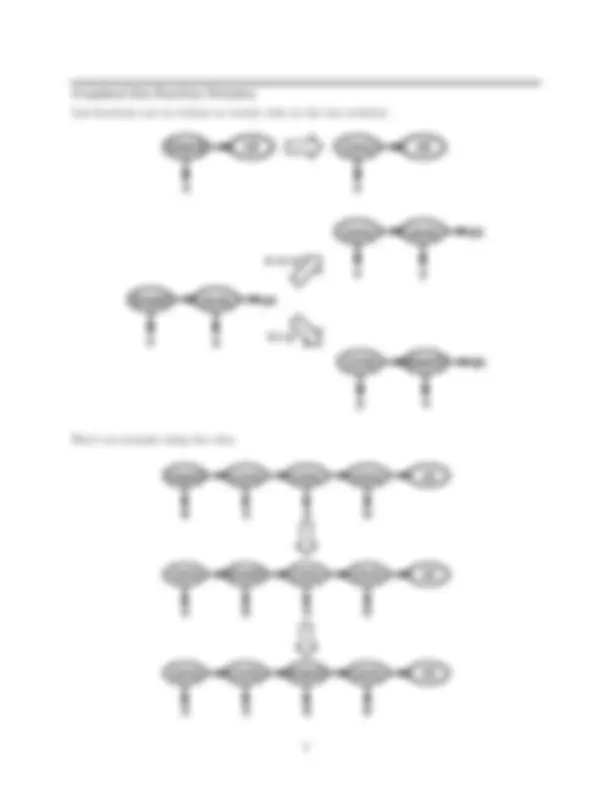
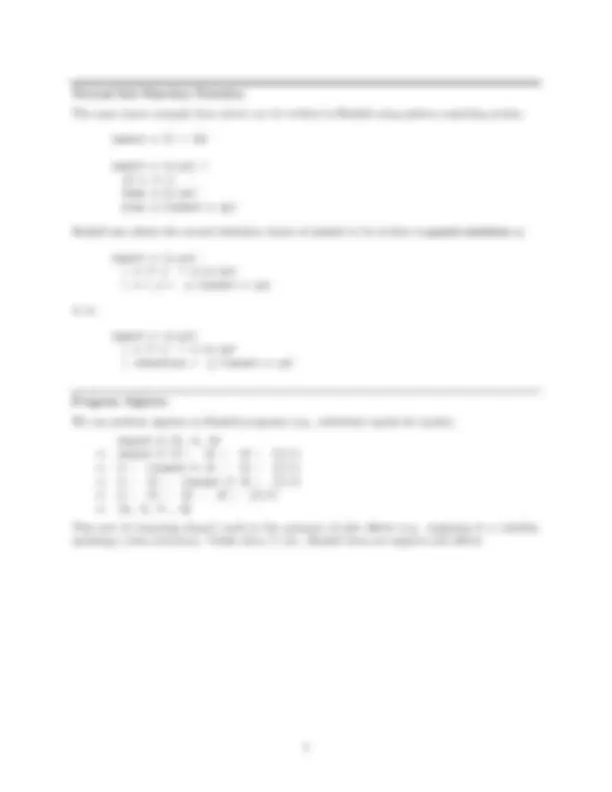
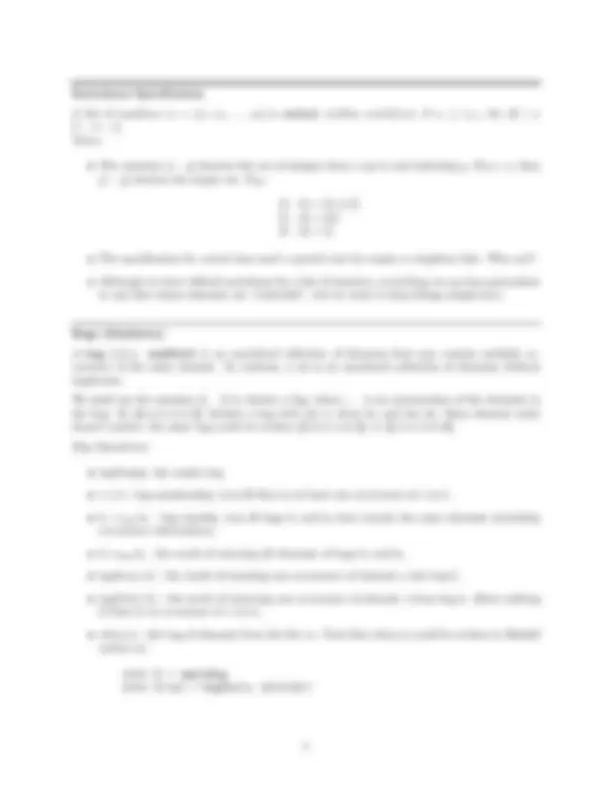
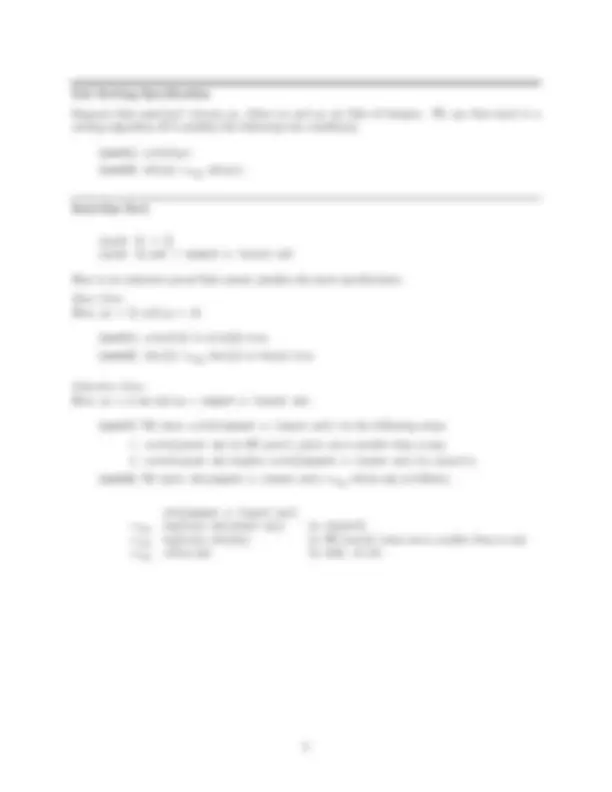
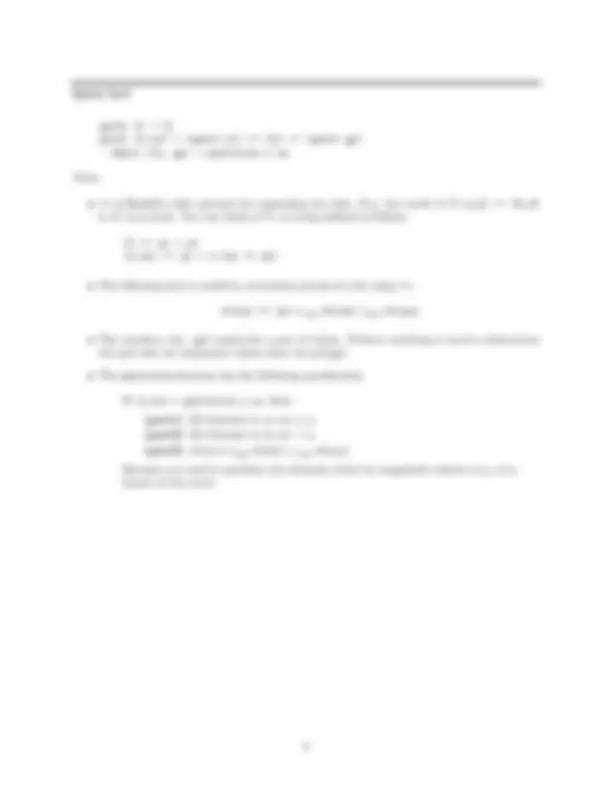
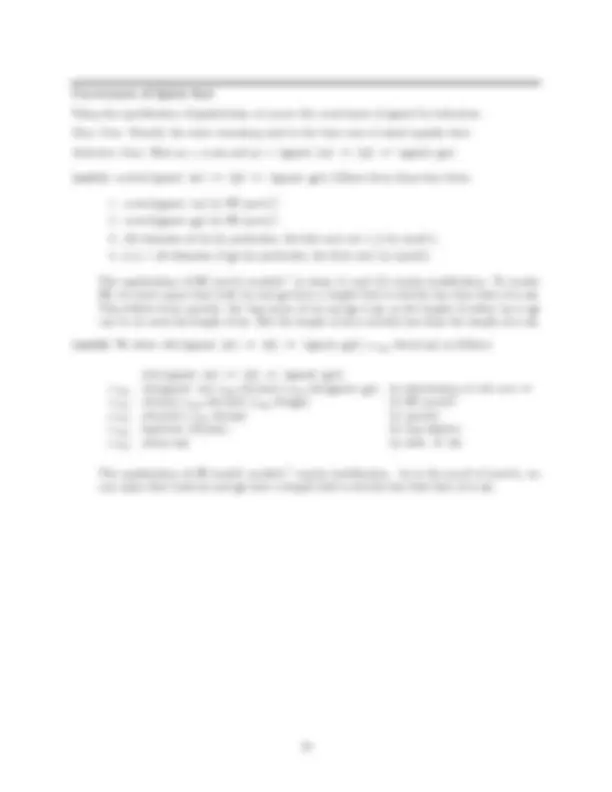
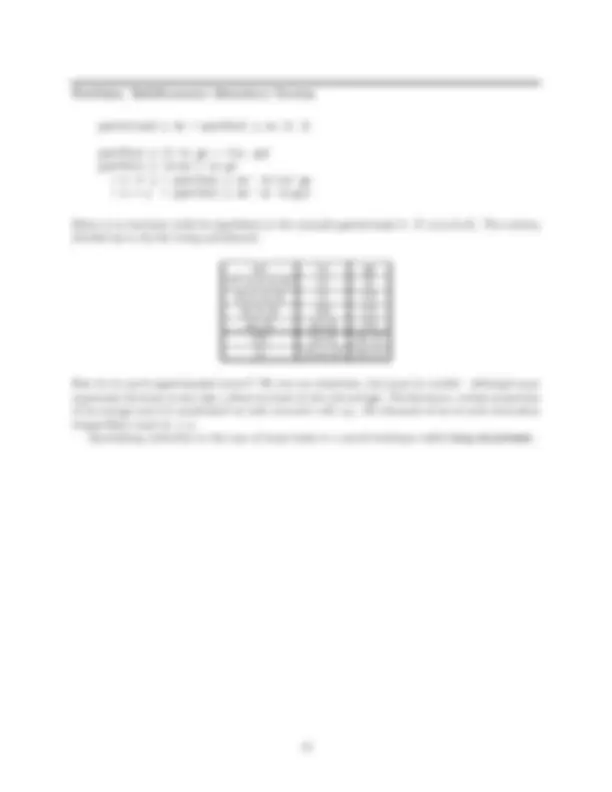
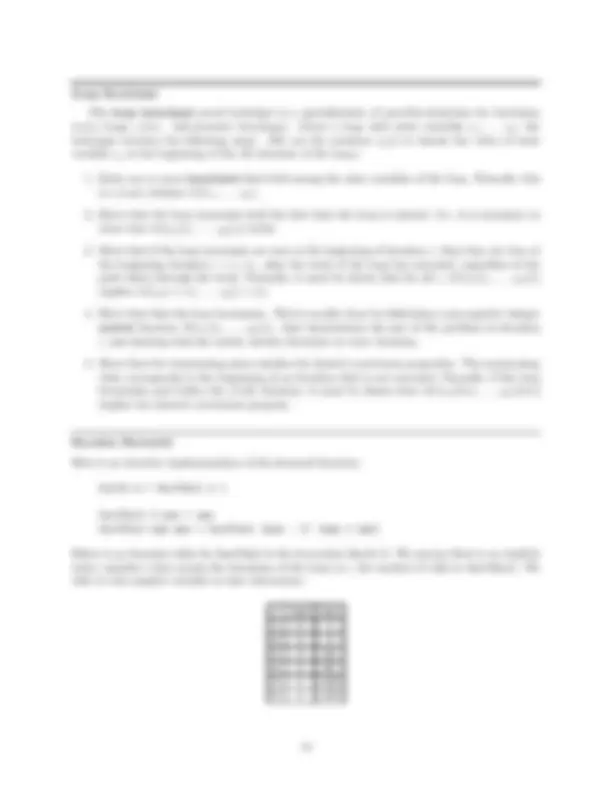
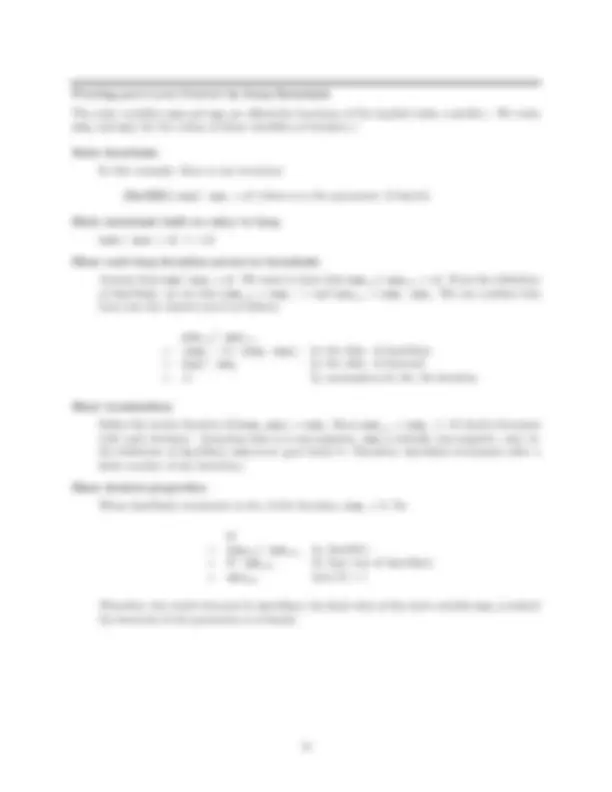


Study with the several resources on Docsity

Earn points by helping other students or get them with a premium plan


Prepare for your exams
Study with the several resources on Docsity

Earn points to download
Earn points by helping other students or get them with a premium plan
Community
Ask the community for help and clear up your study doubts
Discover the best universities in your country according to Docsity users
Free resources
Download our free guides on studying techniques, anxiety management strategies, and thesis advice from Docsity tutors
This handout provides an introduction to induction, loop invariants, and list sorting algorithms. It includes examples of inductive proofs, the definition of list notation, and the specification and correctness proof of the insert function. It also covers the partition function, merge sort, and quicksort algorithms.
Typology: Study notes
1 / 17

This page cannot be seen from the preview
Don't miss anything!










CS231 Algorithms Handout # 10’ Prof. Lyn Turbak October 11, 2001 Wellesley College
This is a revised version of the October 5 handout #10 that fixes several bugs and fleshes out many missing details.
Induction
We want to be able to prove that an algorithm is correct – i.e., that it satisfies the specification of a solution for the problem being solved.
The divide/conquer/glue problem solving strategy naturally leads to recursive algorithms. How does one prove a recursive algorithm is correct?
Induction is a proof methodology for showing that recursive algorithms are correct. An inductive proof has the following structure:
The principle of induction says that (1) and (2) imply that the recursive algorithm is correct for all inputs.
Note that induction formally justifies the “wishful thinking” approach to writing recursive programs that you’ve seen in CS111/CS230.
Induction Example: Factorial
Here is the standard recursive definition of factorial, written in the language Haskell:
fact n = if n == 0 then 1 else n * fact(n-1)
Specification To prove that fact is correct, we must first have a formal specification for what it is supposed to compute. In the case of factorial, we want fact(n) to calculate:
n! =
∏^ n
k=
k = 1 · 2 · 3 ·... (n − 1) · n
Note that 0! =
k=1 k, which is defined to be 1.
Inductive Proof of the Correctness of fact
Base Case (n = 0): fact(0) returns 1 =
k=1 k^ = 0! Inductive Case (n > 0): n ∗ f act(n − 1) is returned by fact(n) = n ·
∏n− 1 k=1 by IH =
∏n k=1 =^ n!^ by algebra
List Notation
Here is box-and-pointer notation for a list:
Here is a tree (cons/nil) notation for the same list:
cons cons cons nil
Here is Haskell’s notation for the same list:
7 : (2 : (4 : []))
Here is Haskell’s abbreviated notation for the same list:
[7,2,4]
Textual List Function Notation
The same insert example from above can be written in Haskell using pattern matching syntax:
insert x [] = [x]
insert x (y:ys) = if x <= y then x:(y:ys) else y:(insert x ys)
Haskell also allows the second definition clause of insert to be written in guard notation as
insert x (y:ys) | x <= y = x:(y:ys) | x > y = y:(insert x ys)
or as
insert x (y:ys) | x <= y = x:(y:ys) | otherwise = y:(insert x ys)
Program Algebra
We can perform algebra on Haskell programs (e.g., substitute equals for equals).
insert 8 [3, 5, 9] ⇒ insert 8 (3 : (5 : (9 : []))) ⇒ 3 : (insert 8 (5 : (9 : []))) ⇒ 3 : (5 : (insert 8 (9 : []))) ⇒ 3 : (5 : (8 : (9 : []))) ⇒ [3, 5, 8 , 9]
This sort of reasoning doesn’t work in the presence of side effects (e.g. assigning to a variable, updating a data structure). Unlike Java, C, etc., Haskell does not support side effects.
Sortedness Specification
A list of numbers xs = [x 1 , x 2 ,... , xk] is sorted, written sorted (xs), if xi ≤ xi+1 for all i ∈ [1 .. k − 1]. Notes:
[3 .. 5] = { 3 , 4 , 5 } [3 .. 3] = { 3 } [3 .. 2] = {}
Bags (Multisets)
A bag (a.k.a. multiset) is an unordered collection of elements that may contain multiple oc- currence of the same element. In contrast, a set is an unordered collection of elements without duplicates.
We shall use the notation {|... |} to denote a bag, where... is an enumeration of the elements in the bag. So {| 8 , 4 , 5 , 8 , 5 , 5 |} denotes a bag with one 4, three 5s, and two 8s. Since element order doesn’t matter, the same bag could be written {| 5 , 8 , 5 , 4 , 8 , 5 |} or {| 4 , 5 , 5 , 5 , 8 , 8 |}.
Bag Operations:
elts [] = emptyBag elts (x:xs) = bagIns(x, elts(xs))
Correctness Proof for insert: Inductive Case
There are two cases here, depending on whether x <= y or x > y.
Case 1: x <= y.
Here, a = x, as = (y:ys), and bs = x:(y:ys).
(insert1) Assuming that as = (y:ys) is sorted, we must show sorted (x:(y:ys)). Since y:ys is sorted, we only need show that x ≤ y. But this is true, by the precondition for Case 1. (insert2) We must show elts(x:(y:ys)) =bag bagIns(x, elts(y:ys)). It is easy to see this is true, since both sides denote bags containing x, y, and the elements of ys. It can also be shown formally by unwinding the definition of elts on x:(y:ys).
Case 2: x > y.
Here, a = x, as = (y:ys), and bs = y:(insert x ys).
(insert1) Assuming that as = (y:ys) is sorted, we must show sorted (y:(insert x ys)). We can show this by proving the following two claims:
List Sorting Specification
Suppose that sort(ps) returns qs, where ps and qs are lists of integers. We say that sort is a sorting algorithm iff it satisfies the following two conditions:
(sort1) sorted (qs). (sort2) elts(qs) =bag elts(ps).
Insertion Sort
isort [] = [] isort (x:xs) = insert x (isort xs)
Here is an inductive proof that isort satisfies the sort specification:
Base Case: Here, ps = [] and qs = [].
(sort1) sorted ([]) is trivially true. (sort2) elts([]) =bag elts([]) is clearly true.
Inductive Case: Here, ps = x:xs and qs = insert x (isort xs).
(sort1) We show sorted (insert x (isort xs)) via the following steps:
elts(insert x (isort xs)) =bag bagIns(x, elts(isort xs)) by (insert2) =bag bagIns(x, elts(xs)) by IH (isort2) (since xs is smaller than x:xs) =bag elts(x:xs) by defn. of elts
Correctness of Quick Sort
Using the specification of partition, we prove the correctness of qsort by induction.
Base Case: Exactly the same reasoning used in the base case of isort applies here.
Inductive Case: Here ps = x:xs and qs = (qsort ls) ++ [x] ++ (qsort gs).
(sort1) sorted ((qsort ls) ++ [x] ++ (qsort gs)) follows from these four facts:
The applications of IH (sort1) marked †^ in steps (1) and (2) require justification. To invoke IH, we must argue that both ls and gs have a length that is strictly less that that of x:xs. This follows from (part3): the bag union of ls and gs is xs, so the length of either ls or gs can be at most the length of xs. But the length of xs is strictly less than the length of x:xs.
(sort2) We show elts((qsort ls) ++ [x] ++ (qsort gs)) =bag elts(x:xs) as follows:
elts((qsort ls) ++ [x] ++ (qsort gs)) =bag elts(qsort ls) ∪bag elts([x]) ∪bag elts(qsort gs) by distribution of elts over ++ =bag elts(ls) ∪bag elts([x]) ∪bag elts(gs) by IH (sort2)‡ =bag elts([x]) ∪bag elts(xs) by (part3) =bag bagIns(x, elts(xs)) by bag algebra =bag elts(x:xs) by defn. of elts
The applications of IH (sort2) marked ‡^ require justification. As in the proof of (sort1), we can argue that both ls and gs have a length that is strictly less that that of x:xs.
Partition: Non-Tail-Recursive Version
partition1 y [] = ([],[]) partition1 y (z:zs) | z <= y = (z:ls, gs) | z > y = (ls, z:gs) where (ls,gs) = partition1 y zs
Example:
(ls 1 ,gs 1 ) = partition 5 [7,2,4,6,3] ⇒ (ls 2 , 7:gs 2 ), where (ls 2 ,gs 2 ) = partition 5 [2,4,6,3] ⇒ (2:ls 3 , 7:gs 3 ), where (ls 3 ,gs 3 ) = partition 5 [4,6,3] ⇒ (2:(4:ls 4 ), 7:gs 4 ), where (ls 4 ,gs 4 ) = partition 5 [6,3] ⇒ (2:(4:ls 5 ), 7:(6:gs 5 )), where (ls 5 ,gs 5 ) = partition 5 [3] ⇒ (2:(4:(3:ls 6 )), 7:(6:gs 6 )), where (ls 6 ,gs 6 ) = partition 5 [] ⇒ (2:(4:(3:[])), 7:(6:[])) ⇒ ([2,4,3], [7,6])
Partition: Tail-Recursive (Iterative) Version
partition2 y ws = partTail y ws [] []
partTail y [] ls gs = (ls, gs) partTail y (z:zs’) ls gs | z <= y = partTail y zs’ (z:ls) gs | z > y = partTail y zs’ ls (z:gs)
Below is an iteration table for partTail in the example partition2 5 [7,2,4,6,3]. The column labelled zs is the list being partitioned.
zs ls gs [7,2,4,6,3] [] [] [2,4,6,3] [] [7] [4,6,3] [2] [7] [6,3] [4,2] [7] [3] [4,2] [6,7] [] [3,4,2] [6,7]
How do we prove partition2 correct? We can use induction, but must be careful – although some arguments decrease in size (zs), others increase in size (ls and gs). Furthermore, certain properties of ls and gs must be maintained at each recursive call; e.g., the elements of ls at each invocation of partTail must be ≤ y. Specializing induction to the case of loops leads to a proof technique called loop invariants.
Loop Invariants
The loop invariants proof technique is a specialization of proof-by-induction for iterations (a.k.a loops, a.k.a. tail-recursive functions). Given a loop with state variables s 1 ,... , sk, the technique involves the following steps. (We use the notation sj (i) to denote the value of state variable sj at the beginning of the ith iteration of the loop.)
Iterative Factorial
Here is an iterative implementation of the factorial function:
fact2 n = factTail n 1
factTail 0 ans = ans factTail num ans = factTail (num - 1) (num * ans)
Below is an iteration table for factTail in the invocation fact2 5. We assume there is an implicit index variable i that counts the iterations of the loop (i.e., the number of calls to factTail). We refer to this implicit variable in later discussions.
i num ans 1 5 1 2 4 5 3 3 20 4 2 60 5 1 120 6 0 120
Proving partition2 Correct by Loop Invariants
State invariants There are three invariants that hold among the state variables zs, ls, and gs (each of which is assumed to be indexed by an implicit index variable i).
(partLI1) Every element of lsi is ≤ pivot y. (partLI2) Every element of gsi is > pivot y. (partLI3) elts(ws) =bag elts(zsi) ∪bag elts(lsi) ∪bag elts(gsi), where ws is the list parameter of partition2.
Note how the loop invariants are similar to the specifications (part1), (part2), and (part3). This is not coincidence; each (partLIx) will be used to show (partx) in the final step of the proof.
Show invariants hold on entry to loop In the initial invocation of partTail, zs 1 = ws, ls 1 = [], and ls 1 = [].
(partLI1) Each of the zero elements of ls 1 = [] is ≤ y. (partLI2) Each of the zero elements of gs 1 = [] is > pivot y. (partLI3) elts(ws) = elts(ws) ∪bag elts([]) ∪bag elts([]) by bag algebra = elts(zs 1 ) ∪bag elts(ls 1 ) ∪bag elts(gs 1 ) by defn. of partition
Show each loop iteration preserves invariants
(partLI1) Assume all elements of lsi are ≤ y. If zi ≤ y, then by the definition of partTail, lsi+1 = zi:lsi, and clearly all elements of lsi+1 are ≤ y. If zi > y, then by the definition of partTail, lsi+1 = lsi, and the claim holds as well. (partLI2) Reasoning similar to that used in (partLI1) shows this. (partLI3) Assume that elts(ws) =bag elts(zsi) ∪bag elts(lsi) ∪bag elts(gsi). The body of the ith invocation of partTail removes the first element zi of zsi to yield zsi+1, and either prepends zi to lsi to yield lsi+1, or prepends zi to gsi to yield gsi+1. In either case, the union of the three bags is unchanged from iteration i to iteration i + 1.
Show termination Define the metric function M (zsi, lsi, gsi) = length(zsi). M always returns a non-negative number, and the value strictly decreases with i since the length of zs decreases by 1 with each iteration. The iteration stops after a finite number of iterations f in when length(zsf in) = 0.
Show desired properties Assume that the loop terminates right before the f inth iteration, in which case partition2 returns the pair (lsf in,gsf in).
Other Classical Sorting Algorithms
The following are other classical sorting algorithms. The proof of their correctness is left as an exercise.
Selection Sort:
ssort [] = [] ssort xs = l:(ssort (del l xs)) where l = least xs
least [] = error "empty list" least [y] = y least (y:ys) = min y (least ys)
del w [] = [] del w (z:zs) | w == z = zs | otherwise = z:(del w zs)
Merge Sort:
msort [] = [] msort [x] = [x] msort xs = merge (msort ys) (msort zs) where (ys,zs) = split xs
merge ps [] = ps merge [] qs = qs merge (p:ps) (q:qs) | p <= q = p:(merge ps (q:qs)) | otherwise = q:(merge (p:ps) qs)
split [] = ([], []) split (x:xs) = (x:zs, ys) where (ys, zs) = split xs